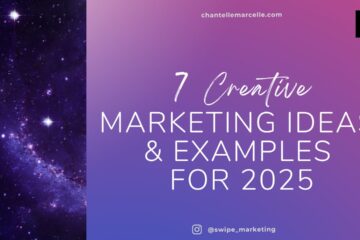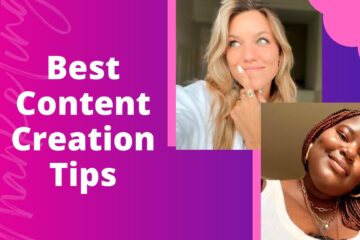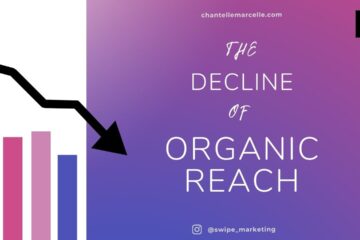

Analysis of Influencer Marketing and Social Media Diversity Reflects Visual Bias
One of my guilty pleasures is watching reruns from older seasons of MTV reality show Catfish. The show features people who request help to figure out if someone they’ve bonded with online is a real person or a hoax. Or in other words, a catfish.
Per Wikipedia: “On the internet, a ‘catfish’ is someone who creates fake personal profiles on social sites using someone else’s pictures and false biographical information to pretend to be someone else.”
Nowadays virtual-first communication is fairly common. We’ve become a swipe-left-or-right society and are familiar with the signs that someone is less than authentic.
But in its heyday, Catfish plotlines depicted the adjustments to communicating and forming relationships entirely online.
What was always most interesting to me was how people on Catfish professed their devotion or love for the person they’d connected with online. They swore they felt something that transcended the Internet and would last the test of time, no matter who the potential catfish was in reality.
Until they actually saw the person in the flesh.
The reactions were always awkward when the two people finally met and judged each other face-to-face.The declarations of love and “looks don’t matter” refrain ended there every episode.
The true image of the catfish didn’t match up with the visual expectation, which created an immediate rift.
Because looks DO matter. Duh, right?
They matter a lot.
In life in general, but particularly in marketing and advertising.
Images can lend credibility and relatability. They can build trust before any words are exchanged.
While choosing the right image counts for a lot when it comes to both personal and corporate branding, it’s not easy. Part of the complication comes from societal perceptions that create instant judgments based on what we see. These perceptions can bias and influence thoughts about you before relationships even start.
- The Research and Statistics on Beauty Standards and Visual Bias
- Effects of Visual Bias on Advertising and Marketing Design
- Using Advertising & Marketing Imagery to Combat Visual Bias
- Lack of Visibility for Social Media Diversity
- Diversity, Inclusion and Visibility in Influencer Marketing
- The Face of the “Perfect” Social Media Influencer
- Social Media Algorithms Have a Diversity Problem
- The Future of Diversity Social Media Influencer Marketing
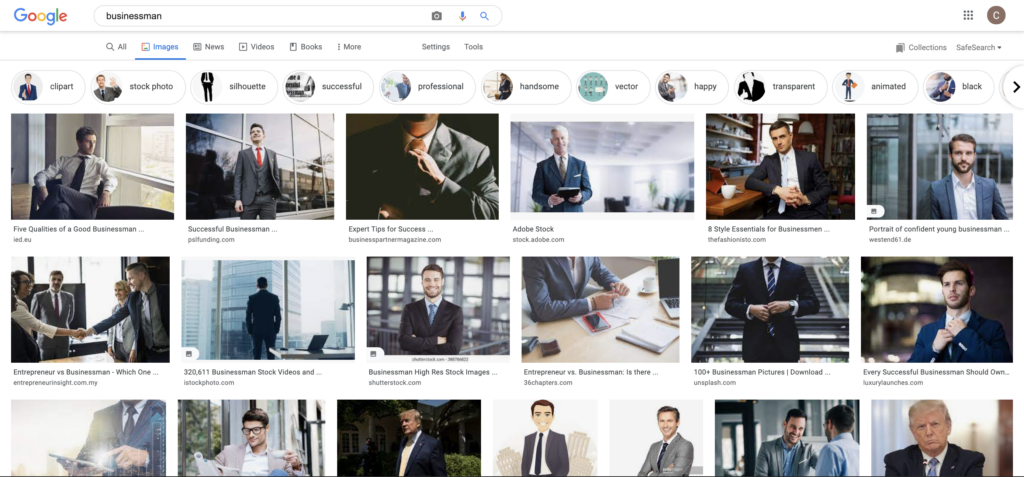
The Research on Beauty Standards and Visual Bias
The advantages of beauty can be felt in every area of our lives.
(And by beauty I mean the standards society says equate to attractiveness.)
- Researchers found that criminals perceived to be unattractive are given fines up to 304.88% higher on average than more attractive criminals.
- A study found that good looking men earn 17% more, while good-looking women earn 12% more, than those considered unattractive.
- Professors who earned higher “hotness” scores on ratemyprofessor.com were found to earn an average of 6% more than their less hot colleagues.
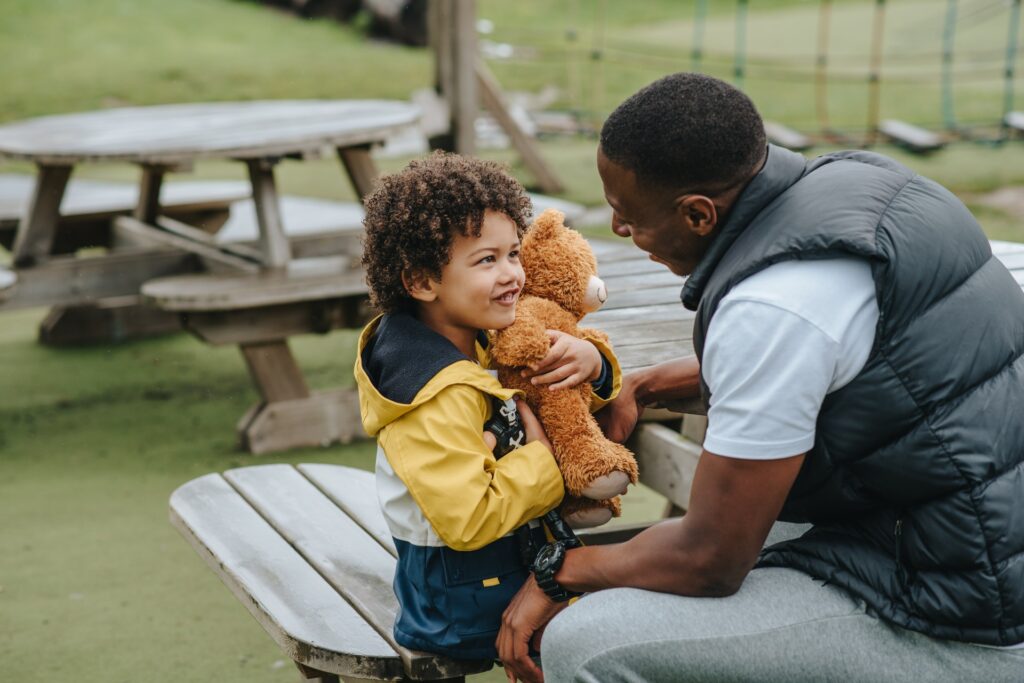
Complicating matters further, notions of beauty vary slightly between communities and are impacted by factors entirely out of our control, such as age, gender and race.
To use race as an example, the effects of racial bias play a substantial role in perception and judgment.
One study found that Black men receive an average of 19.1% longer sentences than white men.
Another particularly interesting study by the American Psychological Association asked both police officers under age 37 and a variety of white women enrolled at public US universities to rate the innocence of Black, white and Latino boys based solely on physical appearance.
Read Another Article: How One Photo Website Combats the Bias of Artificial Intelligence
Both groups indicated that Black boys starting at the age of 10 appeared “significantly less innocent” than both white and Latino children of the same age. And they estimated the ages of the Black children to be at least 4.5 years older.
You can imagine how that might impact treatment of Black children.
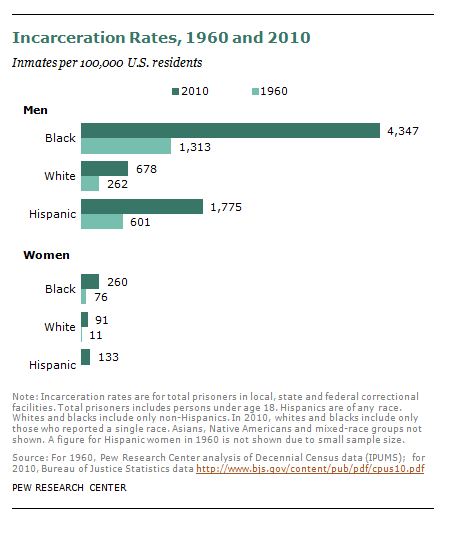
To continue along the vein of how race impacts our visual perception of other people, you may also have heard of the “own-race bias,” or “other-race effect.”
It says that “own-race faces are better remembered when compared with memory for faces of another, less familiar race.”
So you’ll have a harder time recognizing and recalling the faces of people who aren’t of the same race as you, especially if it’s a race you aren’t frequently exposed to.
Effects of Visual Bias on Advertising and Marketing Design
In sum, appearance and images provide the first signal that helps people start making decisions.
Visual storytelling is equally, if not more, impactful than copy and text-based content.
Research shows customers will connect dots more quickly when there are images involved rather than just copy.
A study by the Google research team revealed we as website users start forming judgments of a brand within 17 milliseconds based solely on visual aspects of a website.
When we select images to represent a brand in various campaigns, we have to consider both our own biases as well as those of our audiences.
And the track record shows improvement is needed.
Representation in marketing and advertising materials has historically been limited. And this views the topic of marketing and social media diversity through a broader lens than just gender or race representation.
Read Another Article: A Mega-List of the Best Marketing Books
Only 19% of people featured in ads are from a minority group.
And while “people with disabilities make up 20% of the population,” they represent less than 2% of media images, according to the Disability and Media Alliance Project.
AARP, a US interest group for people over age 50, released a report on ageism in marketing and advertising campaigns.
The study showed certain industries, like technology, rarely show people over 50 in marketing or social media images.
When people over age 50 are depicted, it’s usually in a negative context.
It made headlines when queen of my heart celebrity-philanthropist-businesswoman Rihanna chose 67-year-old JoAnni Johnson to be a model for her luxury fashion line with LMVH, Fenty.
Because it’s unheard of.
Not only in the beauty industry, but in marketing and media as a whole.
(But Rihanna is no stranger to setting new standards for inclusive marketing.)
Seeing yourself positively reflected in marketing, advertising and the media is important for healthy self-image.
It also impacts our perception of a brand.
Multiple studies reveal people belonging to ethnic minority groups in the US responded more favorably to ads that feature someone who looked like they were of the same ethnicity/race.
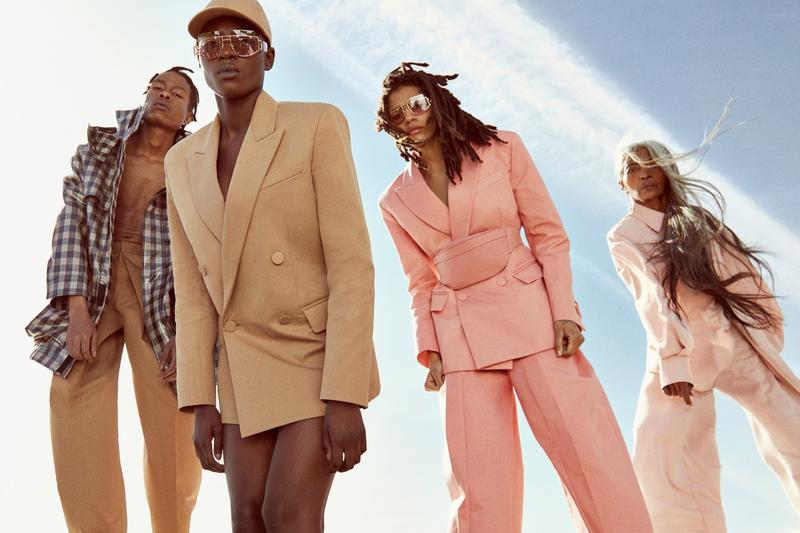
Using Advertising & Marketing Imagery to Combat Visual Bias
I recently interviewed Enrique Hoyos, the head of marketing at Pexels, a resource that provides over 3M free photos and videos for download. I’ve used their library a ton at the variety of small businesses and startups I’ve worked for.
Part of our conversation included the visual bias that affects marketing and storytelling.
Enrique is a huge believer in the power of visual storytelling.
“How much does imagery actually affect the world? It has a huge amount of power to normalize things. It changes culture,” he said.
Here’s what else Enrique had to say about how Pexels counteracts algorithmic bias:
“If everyone is clicking on the image of a white man, like when [they] search for business, that’s telling the algorithm, that’s it.“
“And if people keep clicking on [images of white people], the more it [improves in ranking visibility]. And the more [it moves up in rank], the more people will click it.”
“It’s just a vicious cycle.“
“So what we’ve done and are continuously doing is actually introducing a human touch to the algorithm. So for all the search terms, we not only let the algorithm pick stuff, but our curation team actually goes in and hand picks a certain number of photos.“
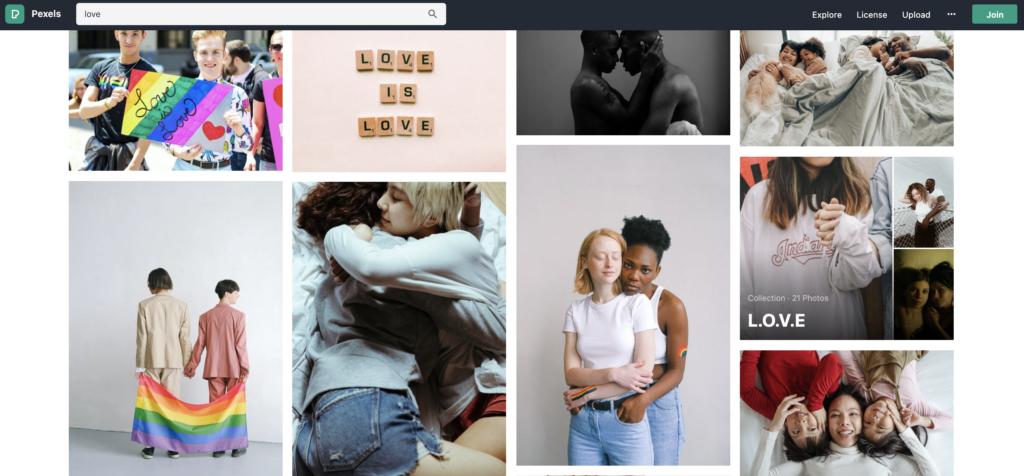
That gets boosted into the algorithm to show that diversity. To add that opportunity for those photos to be seen and clicked on.
We did that last June. There was a whole focus on PRIDE, and we did it for ‘couple.’ We did it for ‘marriage,’ for all these things to be able to show not just heterosexual couples, but all kinds of couples.
And you could immediately see a huge amount of downloads on those photos that were not getting downloaded before. Because people have to search, ‘I want a homosexual couple’ to display that. And now people have the option to just be like, I want [photos of] a couple. And then [they] see beautiful photos of people just loving each other.“
Read Another Article: 7 Creative Marketing Tactics to Test Out (with Examples!)
To add to what he said, remember the own-race bias mentioned earlier in this article?
Researchers found that showing Caucasian babies pictures of Chinese babies in picture books increased their ability to accurately recognize the faces of people of that race later on.
Diverse representation matters when it comes to eliminating not only visual bias, but our overall mentalities toward people different than us.
Marketers and advertisers have a great deal of say in general and social media diversity.
Imagine the impact if more brands were mindful of that responsibility and the impact on audiences.
Lack of Visibility for Social Media Diversity
Remember the debate around Twitter and its cropping algorithm?
Several users pointed out that there was a tendency for people with dark colored skin to be cropped out of preview views in favor of people with lighter complexions.
Twitter recently nixed its photo cropping feature entirely because users were right, according to Twitter’s software engineering director.
Internal research showed photos were indeed being cropped in favor of White people over Black people.
It’s great symbolism for how non-white users tend to be overlooked on social media in general.
The top influencers on every social media platform always tend to be white.
The lack of social media diversity and visibility holds steady for both celebrities and other personalities.
If you ask most people to name who they believe to be the most successful social media influencer, most of the names will be the same.
Dixie & Charlie D’Amelio. PewDiePie. David Dobrik. Cameron Dallas. Jen Selter. Jake & Logan Paul.
Related Content: Gen-Z and Millennial Marketing Strategy Means Brand Evolution
White social media influencers and content creators get more coverage, more visibility and more brand partnerships.
In 2020 late night talk show host Jimmy Fallon tapped influencer Addison Rae to showcase TikTok dances over any of the countless BIPOC (Black, indigenous, people of color) content creators. It sparked backlash for its erasure of the creators of color who originated many of the dances, but the show’s produces made that decision for a reason.
Yes, Addison has a higher follower count and would bring more attention to the show, especially from her massive Gen-Z following.
But there was certainly a calculation to pick someone who had an image presumed to appeal to the most mainstream American viewers.
Diversity, Inclusion and Visibility in Influencer Marketing
Brands and the media most often highlight white social media influencers when speaking to mainstream audiences.
They tap BIPOC influencers or content creators when they want to target niche or minority communities.
That’s despite the fact that nearly every single viral social media trend, TikTok dance, or slang term originates with BIPOC content creators.
Specifically Black culture is noticeably influential on mainstream social media trends. I’m talking about everything from slang like “tea” or “on fleek” to viral TikTok dances like the choreography for rapper Megan Thee Stallion’s chart-topping song Savage that dominated for months.
All of which brands have eagerly sought to capitalize on without showing proper appreciation for the communities behind them.
It’s also documented that the majority of non-white social media influencers are paid significantly less for promotions and sponsorships than White influencers. That’s regardless of follower counts.
Related Content: Lessons on Inclusive Marketing from Rihanna
Black influencer Adesuwa Ajayi created an Instagram called Influencer Pay Gap that shares submissions from others who have received unfair compensation for brand partnerships.
Part of the issue is the ongoing perception I mentioned above: the belief that White influencers have more widespread appeal and will drive more results.
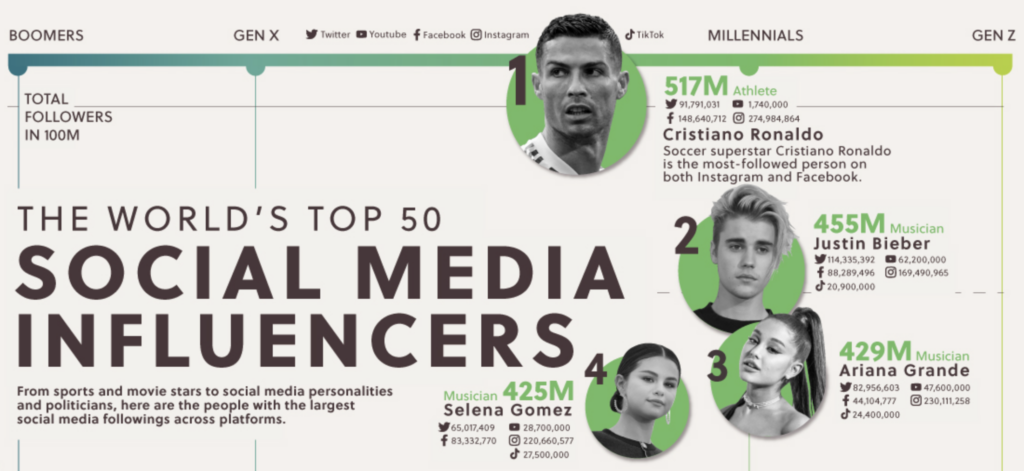
Not to mention the misconception that White consumers have stronger buying power.
What makes this all stranger is that Black and Hispanic audiences engage more with social media content and spend more time on platforms, according to a Facebook study.
In addition, another survey found that 55% of Black Millennials spend at least one hour a day on social networking sites (6% more than all Millennials) and 29% say they spend at least three hours a day, 9% higher than all Millennials.
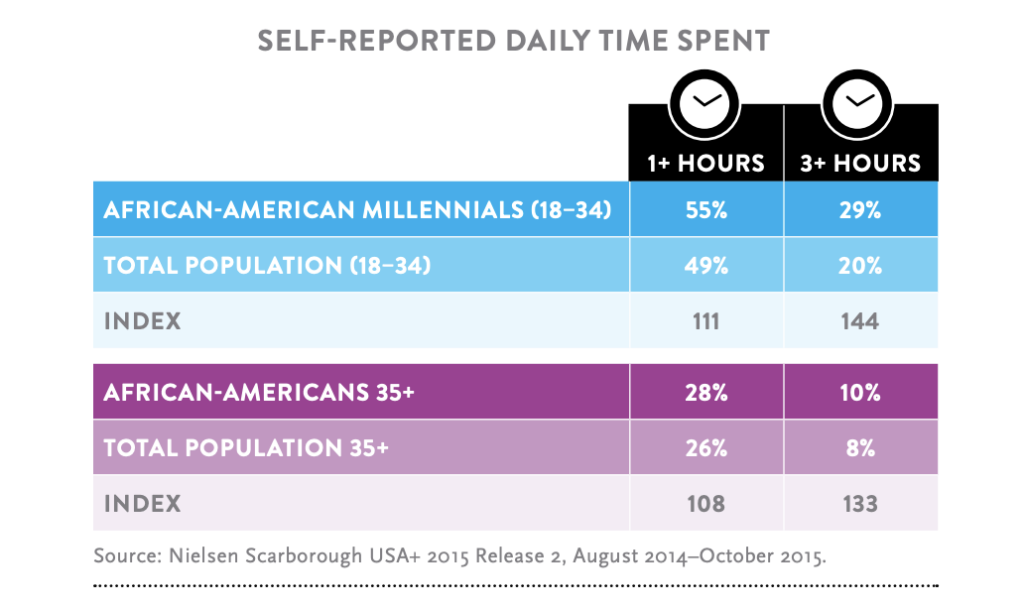
And overall “Black and Hispanic users…consumed 137% more streaming video” than all other users across the board.
So you’d think brands would be eager to work with creators who could offer insight into connecting with this key demographic on social media.
The Face of the “Perfect” Social Media Influencer
It’s not just brands and the media that are responsible for the overshadowing of BIPOC influencers, though.
PAPER published a report including a composite image of the “perfect” social media influencer, based on the top 100 most popular Instagram accounts.
The result was a White woman.
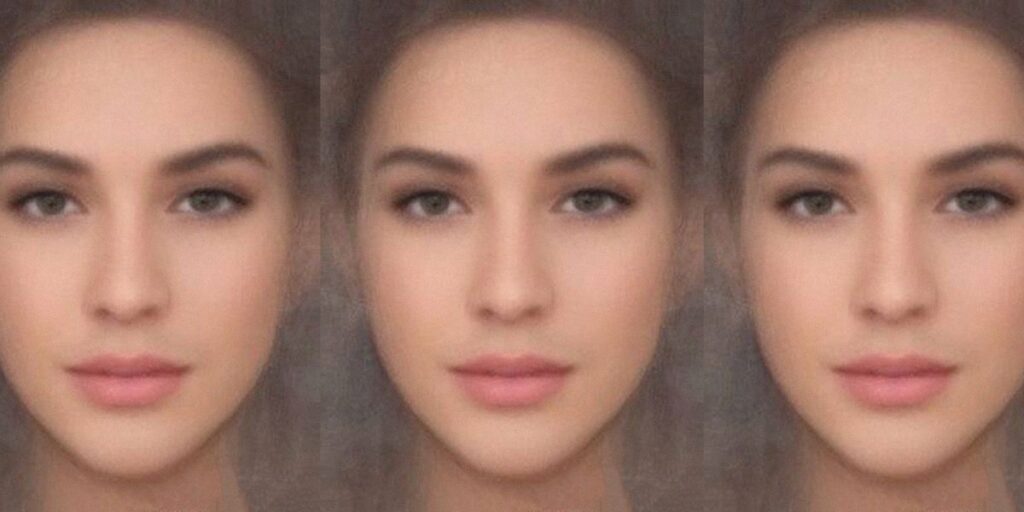
Out of the top 100 most-followed Instagram influencers (celebrities not included):
- 9% are Black,
- 7% are Asian,
- 2% are Middle Eastern.
About half are White, non-Hispanic.
Only 19% are over age 30.
Algorithms Contribute to the Social Media Diversity Problem
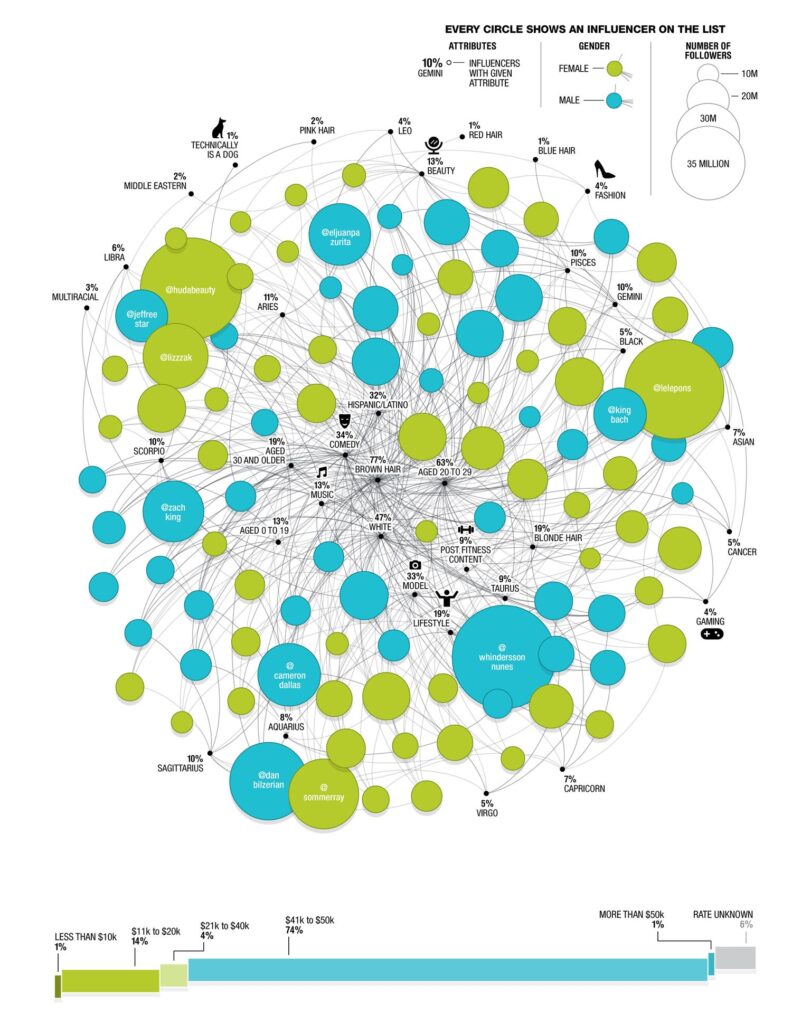
Social media algorithms zero in on young white faces and features to determine which content to highlight in spotlight or showcase areas of the apps.
Research shows artificial intelligence systems developed by leading tech companies struggle to recognize or categorize the faces of Asian or dark-skinned people and women.
Facial recognition algorithms display the most trouble with identifying Black women. Even celebrities like Oprah and Serena Williams go unrecognized or miscategorized.
There was the case of Zoom removing Black faces entirely.
And even the case of a programmer calling out the AI behind the Google Photos app for categorizing Black people as gorillas instead of humans.
The bulk of the problem is that algorithms created by US-based tech companies have a lack of training data and resources.
The technology is created by mostly men and then trained with mostly images of White people.
The Future of Diversity for Social Media & Influencer Marketing
And Twitter isn’t the only platform that’s been called out for favoring White users.
In 2020, shortly after the videotaped murder of George Floyd, a number of social media users began calling out multiple platforms for suppressing the voices of BIPOC creators on the apps.
TikTok released an apology afterward admitting that the platform had work to do in reviewing equal opportunity for content by all users to be showcased.
Creators pointed out that numerous videos and trends they uploaded would receive minimal likes and attention. But then a white user would repost and the algorithm would elevate that content to be viewed on a much more widespread basis, diminishing the role of the original BIPOC creator.
To address another concern raised, TikTok also committed to review policies in place to protect users from harassment and hate.
Women and BIPOC content creators have long voiced their concerns around privacy and safety across social media.
Related Content: BlackPlanet Founder Discusses The Importance of Niche Communities
Social media moderation is an area long neglected.
In general, many social media users have begun to look for micro-communities to establish social online spaces without the fear of trolling and abuse that have become prevalent on major platforms.
But is the solution really to push diverse users away from the main platforms?
With more conversation around the importance of diversity and inclusion, social media platforms definitely need to take the challenge of better support for all users and creators.
Improving the experience for BIPOC users would translate into improvements for everyone by enriching all our content feeds with widespread representation of ideas and images, as well as more safety in general.
Read another post: TikTok & Netflix Prove Impact of Improving Content Distribution Strategy
Interested in getting more content like this? Sign up for my newsletter and get fresh insight delivered to you weekly.
